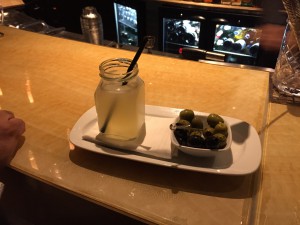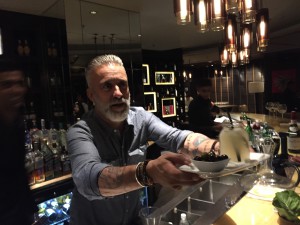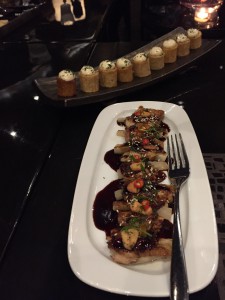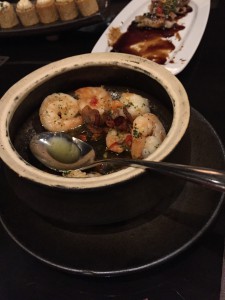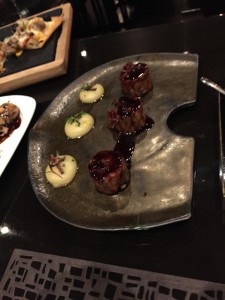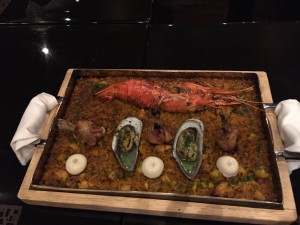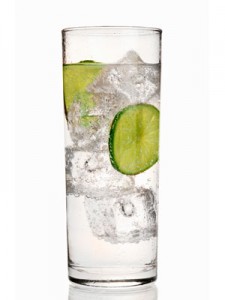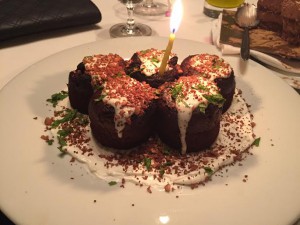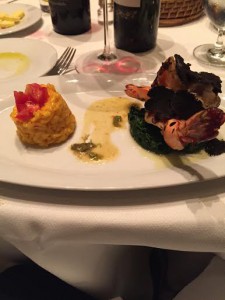Article by Sommelier Nikhil Agarwal of All Things Nice features in Outlook Business Gourmet.
For the longest time our options in terms of cuisines and gourmet foods available in India were limited. We had restaurants serving Indian cuisine and Indianised versions of Chinese and Italian cuisine and that was it. The hotels had the nicer restaurants and the stand-alone restaurant in India was pretty average.A trip to the local grocery store to buy cheese was limited to processed cheese and cheddar with a few other very basic ingredients.Sometimes to understand just how far we’ve come its good to look back and see what the gourmet reality was even just some fifteen years ago.
To understand the gourmet food sector in India it’s important to begin with talking about the Indian consumer and understand him better. The average Indian consumer has more money to spend than ever before. He is a lot better travelled and is becoming more aware about different food cultures from around the world. He is better informed on food trends and even if he doesn’t move out of his room all he would have to do is skip through all the hundreds of channels available to him and he would have an opportunity to watch at least seven to ten different shows on food and food culture.
The Internet in terms of general content online and especially posts on social media like facebook, twitter and instagram would make it impossible for him to not be exposed to gourmet food. It’s not surprising therefore that food and restaurants have taken on such importance in the last few years. The Masterchef phenomenon is unbelievable, how many people are hooked, watching the show almost every night, watching contestants whip up gourmet dishes. It’s impossible to eat everyday food after watching these shows.
The buzz is everywhere, people are discussing their favourite restaurants and dishes and vacations are being planned around gastronomy and wine. Think back ten years ago and you wouldn’t notice this serious interest. This is all relatively new. This consumer is becoming more evolved and demanding which in turn is forcing food businesses to up their game.What’s really interesting here also is that this consumer is willing to pay more to get a better gourmet product or experience and that our palate is ready to try out various cuisines. A Chinese restaurant serving more authentic cuisine or a pizzeria serving a more traditional Italian style of pizza has far more takers than before. As any society becomes more sophisticated with basic and secondary needs being taken care off people often spend their disposable income on food, drink and other lifestyle products. In India to see this happening everyday and again we must remember that it has only just begun.
As India becomes a global business hub the number of people from all over the world that choose to make India their home will also increase. You can see it all around you, they bring with them their own food and drink cultures and create a demand that needs to be met. I find it very interesting to see expats shopping for vegetables at the local markets. The local markets have understood this new demand and are not only selling ingredients and gourmet products for this international customer but in a lot of cases have even learnt to communicate with them in their language. Don’t get me wrong I don’t peg India’s gourmet status with expats but I do certainly understand the value of what people with different cultures from around the world will bring to the gourmet world in India.
When I was twenty years old at the beginning of my career my food choices were limited. Can you imagine what the food world looks like to a twenty year old now? He can choose cuisines from all over the world; he can walk into a modern retail store and choose from a wide array of gourmet products and wine for that matter.It’s not new to him; he’s growing up exposed to it. The pace at which the culture for food and wine will change and evolve is unimaginable and every year the speed of change will increase.
One way to measure just how important gourmet food and wine has become in India is to realize that Chefs and Sommeliers are being given celebrity status and that corporates and banks are using food and drink as a medium to engage their clients or acquire new ones.
Modern retail stores like Godrej Natures Basket for example have changed the game. The number of options for every category of food available is staggering. There are imported fruits, organic vegetables, a range of coffees and teas, truffle oils and even artisanal pastas. Not only do you have cheese like Parmigiano Reggiano, Gouda available but you have aged options of the same cheeses available as well. Charcuterie is not limited to ham and bacon but people are buying Salami Milano, Iberico and Pata Negra. Even the chocolate world has changed.People do not want the same quality and brands that were available earlier. Our market place is capable of absorbing even high priced and ultra superior quality chocolates like Royce from Japan for example.
The availability of these ingredients and gourmet products has also led to a lot of experimentation with food at home making gourmet food even more popular.Technology is such a big contributor; we have applications for our smart phones that allow us to order food, to give reviews and to read them. Everybody is suddenly a food critic.
Rahul Akerkar broke the mold by creating Indigo, a superstar of a stand-alone restaurant. This was not only a revolution in terms of food but for the first time a serious wine strategy was in place that most hotels themselves had not adopted.We got to have a fine dining experience for the first time outside of a hotel. Since then the stand alone restaurant space has exploded with new restaurants opening almost every week. Mumbai, Delhi and Bangalore see most of the action but cities like Gurgaon, Chennai and Hyderabad are also coming along quick.Kolkatta is slow but also on its way. Even in Goa, which has always been, known for its great sea food is starting to see more options than the humble Goan curry.
Molecular gastronomy has also made an in road with restaurants like Masala Library becoming huge success putting a spin on Indian cuisine. On that note there are restaurants that are also transforming the way Indian food is presented. Take for example Bombay Canteen and Indian Accent. Restaurants serving regional cuisines are also becoming popular. Indian food is one of the greatest cuisines on the planet and it so interesting to see modern takes on this cuisine. Having said that the Indian restaurants at the ITC hotels and the like have been centers for world class gourmet indulgences for the longest time.
New big global hotel chains are also coming into the Indian market and existing hotel brands are increasing their footprint. Each hotel opened adds more dining options and competition being healthy the quality of food and beverage. The expat chef was once only at the top five star hotel restaurants in India but now stand-alone restaurants are also bringing Chefs from various parts of the world to create something new and exciting. Chef Alex at The Table, Chef Kelvin at Ellipsis haveadded so much to the gourmet scene in Mumbai for example. The Table also sources some of it’s ingredients from its own farm in Ali bagh.
There are so many events taking place around gourmet food all the time. Cooking demonstrations, wine and food dinners, pop up restaurants, special Chef’s menu’s, visiting international Chefs you name it. There is a sharp increase in activity revolving around food events that makes this a very exciting time in India. So much so that venture capitalist are funding F&B businesses aggressively.
Watering holes are also taking gastronomy very seriously. The gastro pub has finally arrived and microbreweries are serving top gourmet food along with their stellar beers. Woodside Inn has spent a lot of energy and time in creating delicious dishes that go beyond the usual eats that you would find at a bar. I particularly like what Chef Manu Chandra has done with Monkey Bar. It’s varied and so different from anything else. Infact don’t be surprised if you find yourself going more often for the food rather than the drink.
Restaurant brands from London and elsewhere are opening all over India. Hakkasan, Maritime by San Lorenzo, Le Cirque, Wasabi and Arola by Chef SergiArola to name a few. Jamie Oliver is slated to open up his restaurant in Delhi in the very near future. However this is just the beginning, we haven’t even really scratched the surface yet. Mumbai and Delhi have only just started their journeys to become global destinations for food and as we get richer the quality of what’s on offer will also change dramatically. One key element that we must note here is that we do have one of the finest cuisines on the planet and in a sense we have always had a great food culture the only thing that was lacking was options and innovation.
Private party caterers no longer offer the traditional basic fair. They offer a fusion of food from all over the world, presented and plated to perfection. Gourmet food at weddings has been taking to another level where even international Michelin star Chefs are being flow down to cater to their guests. The concept of sit down wine dinners at home where top end wines and food is sharply on the rise for those food and rink enthusiasts who are looking to experience the next gourmet experience.
Wine becomes extremely important when it comes to any gourmet experience and I do think that wine as a category is currently piggy backing on food but in the future interest in wine will generate interest in gourmet food as well. The trend of consuming food and drink together is also on the rise. Our culture has always been one of many drinks followed by dinner and that would be the end of the night. I think the younger generations are beginning to do it differently and more importance is being given to eating and drinking at the same time like the western world. I see this at All Things Nice quite a bit as our wine dinners and dinners paired with single malt have become increasingly popular. There is no better pairing for food than wine and you do see a number of restaurants improve the gourmet experience by having in house sommeliers who are able to guide guests on which wine to have with their food.
Last as I begin to sign off there are gourmet food trucks that are about to unleash themselves on Indian roads adding to the plethora of options in the gourmet world. Perhaps one easy way for me to drive home my point on gourmet food in India is to ask a very simple question. Practically everyone you know wants to start a restaurant or a bar right?


